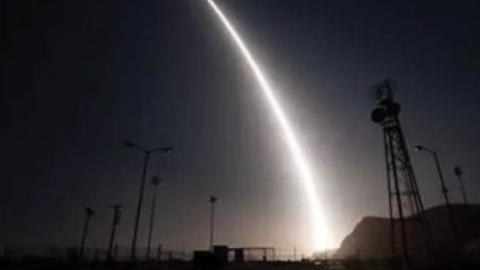The international community cannot become so preoccupied with the Covid-19 pandemic, a dire but transient threat, that enduring global challenges go overlooked – especially nuclear non-proliferation or arms control. Covid-19 already forced cancellation of this spring’s Nuclear Non-Proliferation Treaty Review Conference and suspension of the Russian-US arms-control dialogue. A recent US State Department report on global arms adherence warns that North Korea continues nuclear-weapons development, the Iranian government has declined to resume nuclear talks with Washington, and China and Russia may have resumed low-level nuclear-weapons testing. Zoom, Skype and other means of remote communication among mid-level officials and expert communities cannot substitute for the senior-level intervention needed to overcome the accumulating challenges.
Global arms control is at a crossroads. The New START Treaty, adopted in 2011, will expire in less than 10 months. Moscow and Washington remain divided on how to proceed on the treaty and beyond. Besides the pandemic, the US presidential election, Vladimir Putin’s proposed constitutional rewrites and other issues could impede the need for timely measures to reinvigorate great power arms control. The priority should be including more countries and strategic capabilities. If this is not possible, countries should at least sustain some limits – even if not enshrined in treaties – on various nuclear-weapons systems, means of delivery and practices that could lead to nuclear crises.
Failing renewed global arms control, the international order could become characterized by an absence of formal legal limitations on nuclear force modernization. In this scenario of unbounded nuclear arsenals, the world’s most powerful countries would abandon arms control agreements. Instead, they would prioritize enhanced force capabilities achieved through researching, developing and deploying a large and diverse portfolio of nuclear delivery systems, including non-strategic weapons. They would also strive for qualitative and quantitative advantages to their offensive and defensive capabilities, for example, missiles and interceptors, to dominate all possible nuclear-escalation ladders.
Furthermore, the great powers would decline to place restraints on their capabilities in the hope of exploiting first-mover advantages of even fleeting nuclear advances. They would vigorously pursue emerging strategic offensive capabilities such as cyber weapons, hypersonic systems and counter-space weapons that could help achieve such superiority. The United States and other allies would not welcome this outcome. Such developments would adversely affect global nonproliferation dynamics since they would magnify frustrations among the non-nuclear-weapons states with the great powers and intensify pressure on Non-Proliferation Treaty restraints. The nuclear force buildups, resumption of nuclear-weapons testing, overt threats to employ nuclear weapons against other states and greater salience of nuclear weapons in military doctrines would encourage other states to pursue similar capabilities.
A more benign vision, espoused by both disarmament enthusiasts and the current US administration, would expand the scope of limitations to cover more capabilities and more countries than the Cold War–based Russian-US strategic arms control process. The Trump administration wants to include China within future negotiations and address novel strategic weapons as well as the non-strategic nuclear capabilities hitherto excluded from the Russian-US treaties. Disarmament advocates, including some working with Democratic US presidential candidate Joe Biden, favor great-powers arms control as a tool to transition from a world characterized by mutually assured destruction to one guided by mutually assured security. Despite their differences, both want to reconsider old truths and seek new paths to a safer nuclear future.
Moscow, Beijing and Washington differ on many key arms-control issues. These include Russian and Chinese concerns about US conventional superiority; the US desire to reduce Russia’s tactical nuclear weapons; and mutual unease pertaining to each other’s artificial intelligence, cyber, space and other emerging capabilities. Nonetheless, the nuclear powers could commit to a grand compromise in which they accept that they can achieve additional security through asymmetrical advantages and equivalent capabilities rather than through equal force totals in all categories. Such asymmetric arms control could employ either unbalanced reductions, as the USSR did when accepting the INF Treaty in 1987, or agreements in which parties could flexibly choose which types of forces to deploy under the overall agreed ceilings.
The resulting treaty limits would apply to a larger array of weapon types than in previous treaties, such as non-strategic tactical nuclear weapons, non-deployed and reserve warheads, space-based weapons, long-range conventionally armed hypersonic glide vehicles, and ballistic-missile defenses. Moreover, there would be restrictions on emerging strategically disruptive technologies and missile defense efforts in order to enhance stability, decrease security risks and reduce costs. Verification regimes could involve extensive onsite inspections in addition to other forms of multinational and national monitoring that would encompass nuclear warheads as well as their means of delivery.
Such a comprehensive approach would extend the previous Russian-US process into a multilateral format, bringing in China and perhaps other countries. In contrast to the first scenario, the positive elements of this alternative world would convince the non-nuclear-weapons states that the nuclear-weapons states were making progress towards meeting their stated NPT obligations. This would increase international support for the NPT regime and steer states away from quixotic proposals such as an immediate nuclear-weapons ban.
Unfortunately, a world of complete, verifiable and irreversible global arms control will not soon be realized. A less ambitious but more attainable scenario for arms control than near-term disarmament or comprehensive controls would be the pursuit of arms control primarily as a means to enhance strategic stability and decrease war risks. The mutually assured destruction paradigm would still shape countries’ strategic nuclear policies and doctrines. Still, they would consider even imperfect agreements as valuable if they led to net security gains rather than absolute security.
In this third scenario of reduced risk if not reduced weapons, the great powers mostly would achieve limited deals in areas of common interest that would not require ratification of new formal treaties or legally binding accords. They would instead focus collaboration on achieving less formal executive agreements, informal parallel unilateral actions or greater reliance on strengthened norms of behavior such as that of the non-use of nuclear weapons.
Steps towards this end could include decreasing incentives for nuclear escalation through reducing risks of miscalculation, removing first-strike vulnerabilities and other measures to dampen pressures to escalate major conflicts between the great powers. Additional initiatives to increase great-power transparency and mutual understanding without formal treaties could encompass regular strategic stability dialogues, aimed at developing concrete measures to address the destabilizing potential of new weapons or nuclear doctrines; limiting the proliferation of nuclear and other strategic offensive arms; and identifying and averting dangerous operational practices like deploying nuclear-armed missiles near one another’s territories.
Under these circumstances, other nuclear-weapons states such as Britain and France would accept some unilateral limits on their force, make their nuclear activities transparent and participate in some multinational confidence-building measures. They would also work with the three great powers to launch joint initiatives toward addressing the concerns of the non-nuclear weapons states, especially by coordinating their defense of the NPT against immediate nuclear ban proposals. The world could expect to see more cooperation on countering horizontal rather than vertical proliferation of nuclear weapons.
Nuclear weapons experts can help the nuclear powers advance toward the more positive scenarios, such as by developing means to better distinguish between missiles armed with nuclear or conventional warheads. Nonetheless, the fundamental challenge for global leaders is not to drop the ball on these enduring concerns.
Read in Yale Global Online

















